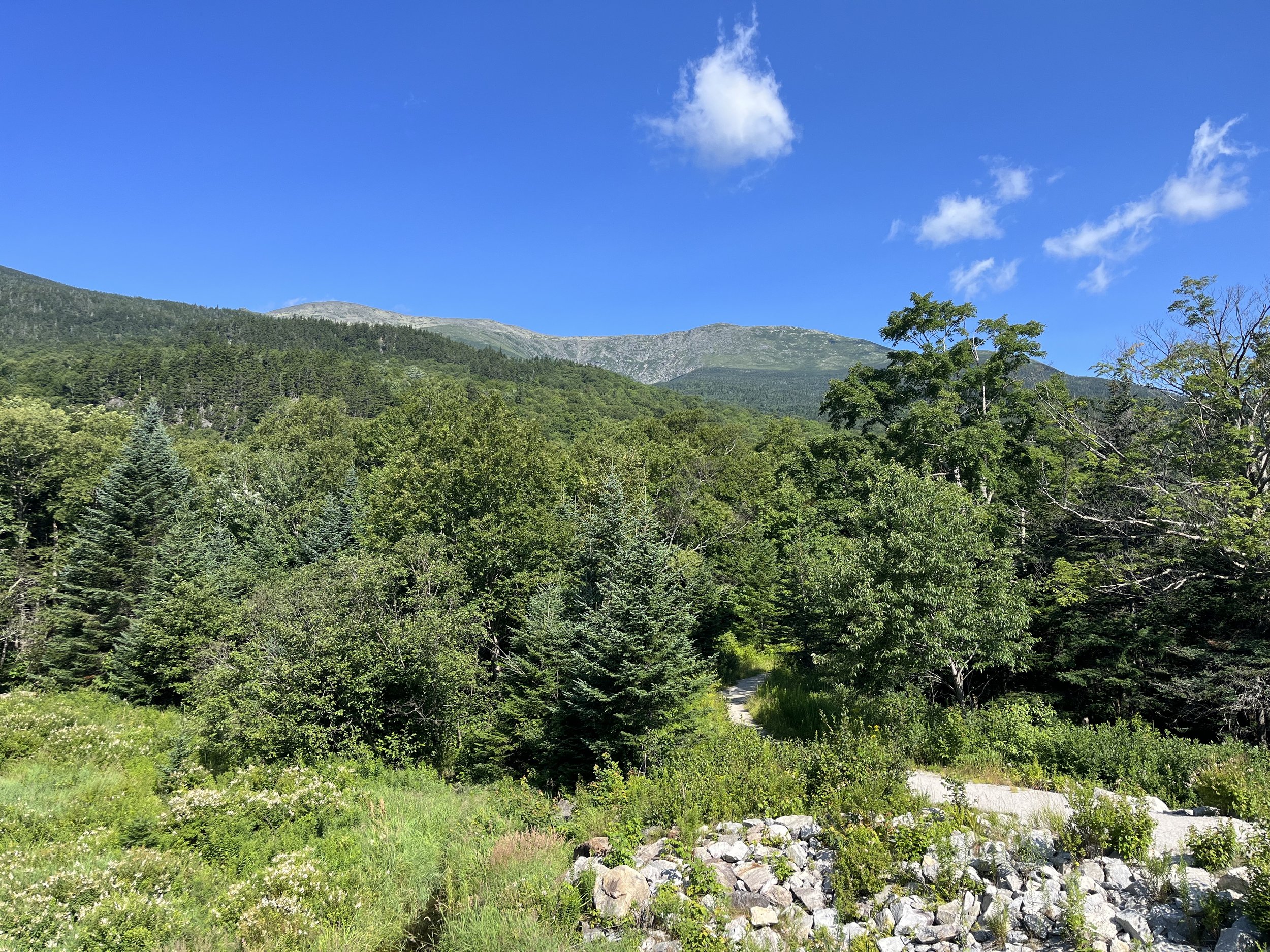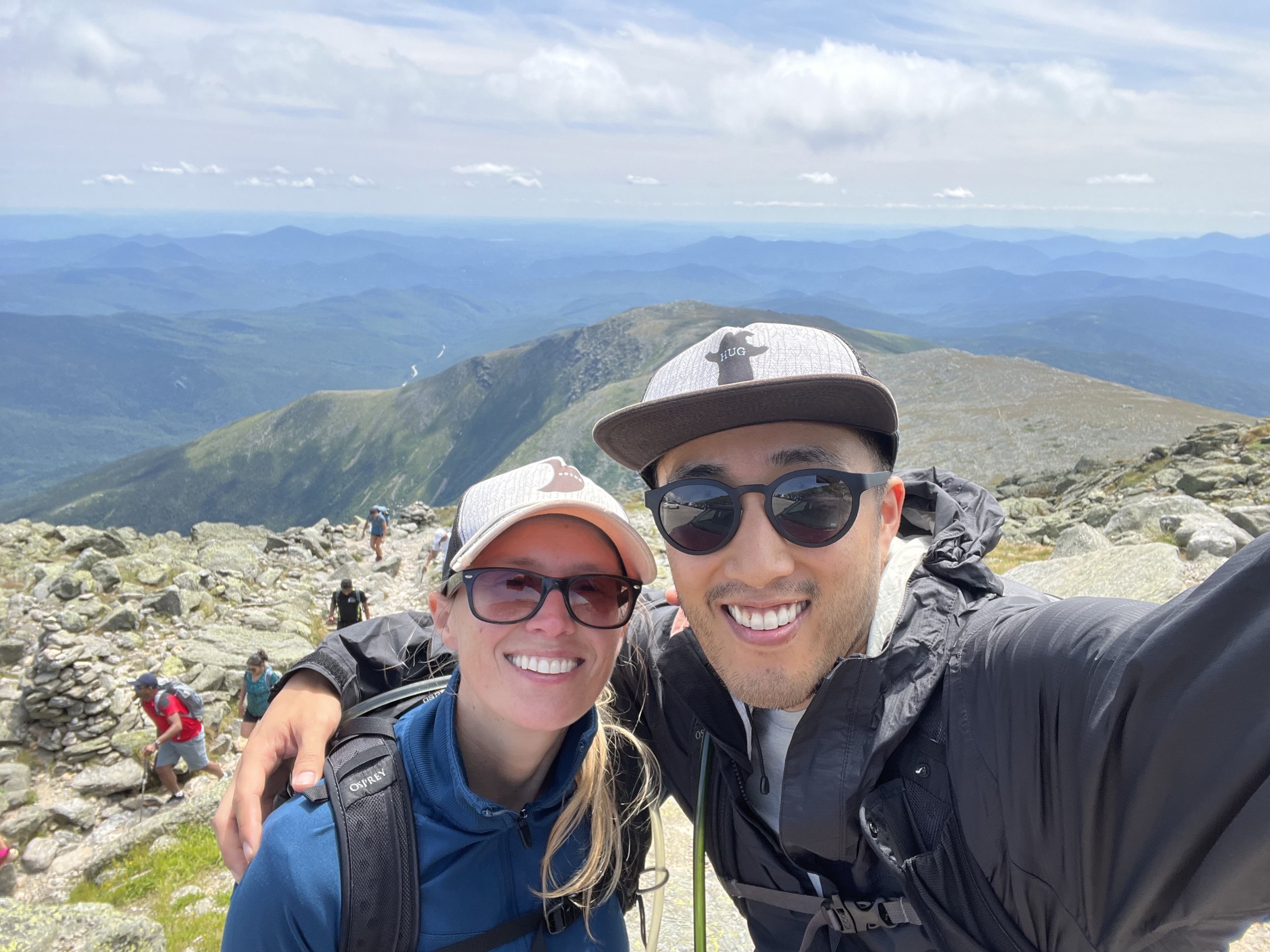Mount Washington via Tuckerman Ravine
Hiking Mount Washington via the Tuckerman Ravine Trail is an exhilarating adventure that combines challenging terrain with breathtaking natural beauty. Just before her birthday, Natasa and I decided to make this our first hike of the year. Initially, we considered Sandwich Mountain, but it wasn't grand enough for Natasa. The Tuckerman Ravine Trail offers stunning vistas, including views of cascading waterfalls and expansive mountain ranges, making it a favorite among outdoor enthusiasts and seasoned hikers alike. As we navigated through lush forests and rocky inclines, leading to the summit of the highest peak in the Northeastern United States.
Parking:
The trailhead parking for the Tuckerman Ravine Trail is located at the Pinkham Notch Visitor Center. The parking lot here is relatively small and can get crowded quickly, especially on weekends and during peak hiking season. When we arrived at 9:30 a.m., the lot was already full, and we had to park along the side of Route 16, which runs adjacent to the visitor center.
The Hike:
The journey to the summit of Mount Washington via Tuckerman Ravine Trail is approximately 4.2 miles one way, with a total round-trip distance of about 8.4 miles. The trail boasts an elevation gain of around 4,300 feet, making it a strenuous yet rewarding climb.
Starting from the visitor center, the Tuckerman Ravine Trail immediately plunges into a lush, dense forest. The initial section offers a serene atmosphere with a mix of hardwoods and conifers, making for a pleasant and shaded beginning. As you climb higher, the trail transitions into more open terrain, revealing rocky slopes and several picturesque stream crossings. The sound of cascading waterfalls accompanies you, adding to the trail’s charm.
Reaching Tuckerman Ravine is a highlight of the hike. This alpine cirque features dramatic granite walls and expansive rugged terrain, offering panoramic views of the surrounding mountains. The sight of this unique geological feature is truly awe-inspiring.
The final stretch to the summit involves navigating boulder fields and rocky outcrops. The effort required is well worth it, as the summit provides breathtaking 360-degree views of the White Mountains and beyond.
By the time we started our descent, our legs were tired and felt like jelly. The challenging terrain and steep sections had taken their toll, and every step down seemed to test our endurance. Despite the fatigue, the sense of accomplishment and the incredible views made the effort worthwhile.
What to bring:
Hiking Boots:
Ensure you have sturdy, well-broken-in hiking boots with good ankle support and traction. The rocky and uneven terrain can be tough on your feet.
Weather-Appropriate Clothing:
Layers: The weather on Mount Washington can be unpredictable, so wear moisture-wicking base layers, an insulating layer, and a waterproof, windproof outer layer.
Hat and Gloves: Even in warmer months, the summit can be chilly and windy, so pack a hat and gloves.
Backpack:
Comfortable Fit: A small to medium-sized backpack will carry your essentials comfortably. Make sure it has adjustable straps and is easy to access.
Water and Snacks:
Hydration: Carry at least 2 liters of water to stay hydrated. Consider using a hydration reservoir or water bottles.
Energy Boost: Pack high-energy snacks like trail mix, energy bars, and fruit to keep your energy levels up throughout the hike.
First Aid Kit:
Basic Supplies: Include essentials such as bandages, antiseptic wipes, pain relievers, blister treatment, and any personal medications.
Sun Protection:
Sunscreen: Apply sunscreen regularly to protect your skin from UV rays.
Sunglasses: Wear sunglasses with UV protection to shield your eyes from the sun and wind.
Camera or Smartphone:
Capture the Moment: Bring a camera or smartphone to capture the stunning views and memorable moments of your hike.





